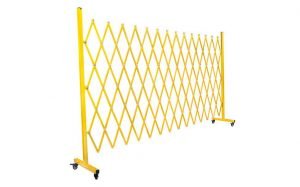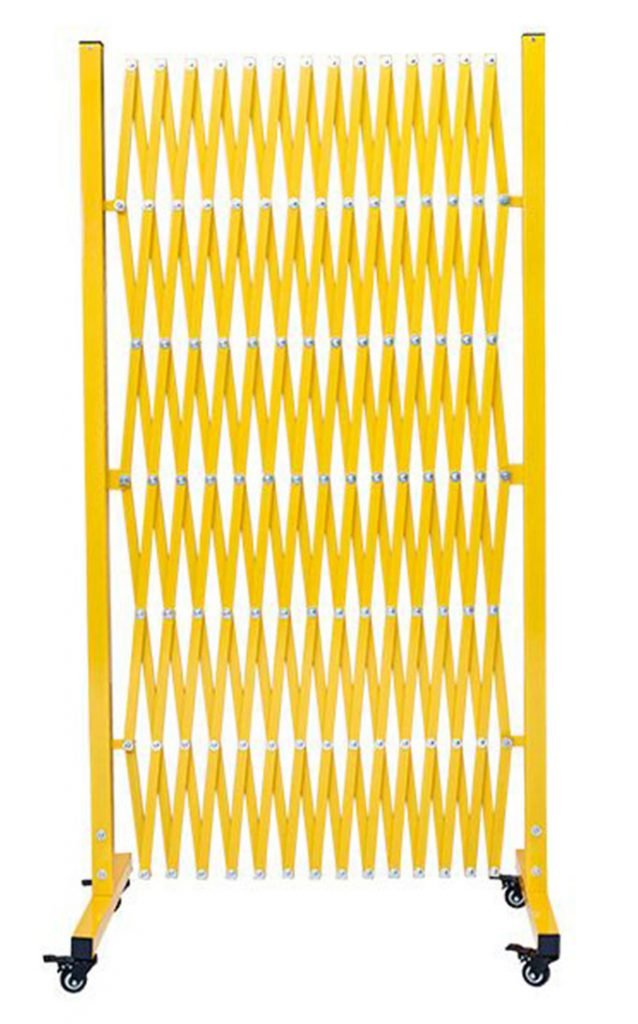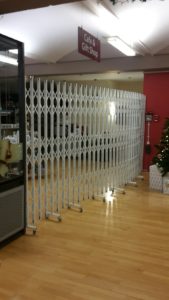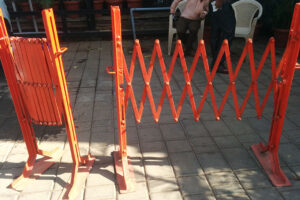
Lightweight Barricades: The Smart Alternative To Traditional Fencing
Our lightweight barricades are designed to help you manage your safety needs without the hassle and expense of traditional fencing.
What are the advantages and where extendable safety barriers can be best used? In this article we will demonstrate the key features of these versatile products, so let’s get back to the basics!
They can be used mainly to create separation between different areas, mark out of access areas, to control crowd, or pedestrian ways, to restrict access to hazardous areas, mark slippery floors, holes, trenches, corridors, doorways, etc. The overall objective of concertina safety barriers is to improve safety in a given area, by blocking, marking, controlling, restricting access in that area.
They can be deployed very easily in a very wide range of contexts such as on airports, festivals, COVID related temporary settings, public spaces such as schools, hospitals, surgeries, courts, or in the commercial sector for example showrooms, shops, offices, or more industrial contexts such as factories, warehouses, building or other construction sites.

One of their most important features is that they are portable. We have two types of safety barriers, the first type being free standing, and the other type wheeled. Expandable safety barriers – whether wheeled or freestanding – are extremely easy to deploy, transport and move around where needed and even to store whilst out of use. As they are retractable, they take up very small space when closed, making them very handy and compact for storing. Our portable barriers can also be locked into position at either end and use them as wall-mounted safety barriers, or left as free standing safety barriers, depending on what they are required for.
They are also often referred to as scissor barriers, and they are available as more lightweight for easy application as well as more heavy duty types, depending on what context they are needed in. Varying heights (from 90cm to 175cm) and lengths (from 2,5m to 4m) also allow our expandable safety barriers to be used on various size areas, indoors as well as larger outdoor areas.
Finally, their bright and high-visibility colours of yellow, or red-and-white, make them impossible not to notice and therefore are most adequate in all sorts of health and safety contexts, whilst the white offers a little more elegant, and less industrial look.

Our lightweight barricades are designed to help you manage your safety needs without the hassle and expense of traditional fencing.

Our barriers are designed with your safety and convenience in mind, ensuring that your operations can continue safely and smoothly.

Our mobile safety barriers are designed to provide not just security but flexibility, ensuring that no matter the challenge, you have the tools to meet it head-on.
We manufacture our mobile safety barriers at low, ex-factory prices and offer you a 3 year guarantee to support our quality standards.
Safeguard Security Group
Unit 5
229 Torrington Avenue
Coventry
CV4 9HN
| Cookie | Duration | Description |
|---|---|---|
| cookielawinfo-checbox-analytics | 11 months | This cookie is set by GDPR Cookie Consent plugin. The cookie is used to store the user consent for the cookies in the category "Analytics". |
| cookielawinfo-checbox-functional | 11 months | The cookie is set by GDPR cookie consent to record the user consent for the cookies in the category "Functional". |
| cookielawinfo-checbox-others | 11 months | This cookie is set by GDPR Cookie Consent plugin. The cookie is used to store the user consent for the cookies in the category "Other. |
| cookielawinfo-checkbox-necessary | 11 months | This cookie is set by GDPR Cookie Consent plugin. The cookies is used to store the user consent for the cookies in the category "Necessary". |
| cookielawinfo-checkbox-performance | 11 months | This cookie is set by GDPR Cookie Consent plugin. The cookie is used to store the user consent for the cookies in the category "Performance". |
| viewed_cookie_policy | 11 months | The cookie is set by the GDPR Cookie Consent plugin and is used to store whether or not user has consented to the use of cookies. It does not store any personal data. |